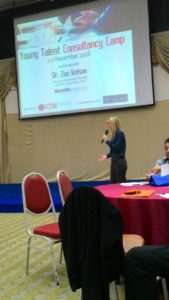It’s about my life.
Suka, duka, passion.
Perjalanan hidup sebagai insan biasa.
Happy Teacher’s Day!
Majlis Citra Karisma 2017
Citra Karisma 2017
———————————
Majlis Anugerah Kecemerlangan & Penghargaan UTM 2017
16 Mei 2017 I Dewan Sultan Iskandar, UTM Johor Bahru
http://events.utm.my/event/majlis-citra-karisma/
Congratulations to my friends, Dr Fuaada , Dr Zaiton dan Dr Zaitul for Anugerah Pencapaian Cemerlang (APC).
WordPress-How to change your profile picture
Just to share and noted here how to change your profile picture with wordpress.
This is considered as “short-cut” especially to those who are not good in programming.
In editing environment, go to:
- Appearance–Widget–Primary Sidebar–Text (pull down menu)-Content.
- Then, copy the text (coding) and paste in Post-Add New-in text environment (not visual)
- Then, click the visual and start editing.
You can remove the picture and add new media/pic in visual mode.
Then copy the coding in text and paste again in the primary sidebar widget (as no.1).
Tarrraaaa!. It’s done.
Not so much i guess, but hope it helps! 🙂
Berbengkel lagi…
Kursus Web 2.0 For T&L: SOCIAL MEDIA & BLOG
Tarikh: 15 May 2017
Time : 9.00-4.30pm
Venue : Bilik Bengkel CTL
Web 2.0 technologies bring the web to a new phase, which allows users not only to use information but also to be directly involved in generating new information. Social Media as one of the Web 2.0 tools allow social interaction and easy creation of content by users. It can be an effective tool for teaching and learning in higher education. It can help connect students to information and help them generate a dialogue with their teacher and other students about a course. Blog is another Web 2.0 facilities which is easy to create and offers variety of interactive facilities. It could give positive impact towards student’s development. This course revealed to academic staff on how to utilize social media and learning and Blog for teaching and learning effectively.
Bengkel/Kursus: Constructive Alignment -day 2
“Constructive alignment is a design for teaching in which what it is intended students should learn and how they should express their learning is clearly stated before teaching takes place. Teaching is then designed to engage students in learning activities that optimise their chances of achieving those outcomes, and assessment tasks are designed to enable clear judgments as to how well those outcomes have been attained” (Biggs, 2014, pp. 5-6).
The constructive alignment approach recognises “knowledge is constructed by the activities of the learner” (Biggs, 2014, p. 9) rather than being directly transferable from teacher to student. “Learning takes place through the active behavior of the student: it is what he does that he learns, not what the teacher does.” (Tyler, 1949)
Alignment occurs when the learning activities that we ask students to engage in help them to develop the knowledge, skills and understandings intended for the unit and measured by our assessment. A constructively aligned unit capitalises on the powerful effect of assessment on students’ learning experiences. If assessment drives students’ learning, then students are most likely to achieve our intended outcomes if the assessment is aligned with our intentions.
The framework of constructive alignment is represented in the University’s recommended approach to unit design:
- Identify the intended learning outcomes
- Design assessment tasks to measure attainment of the learning outcomes
- Plan learning activities to enable students to develop the skills, knowledge and understandings described in the intended learning outcomes and measured by assessment
- Choose the content (topics/examples/resources/materials) required to support the learning activities
References
Biggs, J. (2014). Constructive alignment in university teaching. HERDSA Review of Higher Education, 1, 5-22.
Tyler, R.W. (1949). Basic principles of curriculum and instruction. Chicago: University of Chicago Press.
http://www.teaching-learning.utas.edu.au/unit-design/constructive-alignment
Bengkel/Kursus: Constructive Alignment -day 1
VIVA Disertasi Master
Disertasi Master Pelajar Julies Bong Shu Ai.
Young Talent Consultancy Camp 2016
Chapter 2: Linear System
A “system” of equations is a set or collection of equations that you deal with all together at once. Linear equations (ones that graph as straight lines) are simpler than non-linear equations, and the simplest linear system is one with two equations and two variables.
Source: http://www.purplemath.com/modules/systlin1.htm




